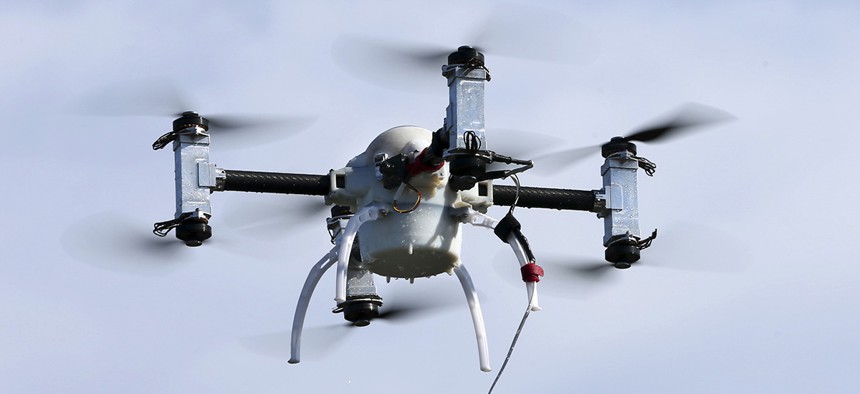Got a Drone Problem? Call the Drone Busters

A small drone with eight rotors, capable of working underwater, flies during a demonstration Wednesday, June 22, 2016, in Lower Township, N.J. Mel Evans/AP
About as long as drones have been popular, there have been people who want to knock them out of the sky.
About as long as hobbyist drones have been popular, there have been people who want to knock them out of the sky. Maybe the drones were flown over brush fires, disrupting fire fighting efforts. Others are sometimes flown near airports, causing alarm and, occasionally, grounding flights. In a truly scary turn, ISIS militants have even used drones to carry small bombs.
Even though most drone pilots behave responsibly, there are clearly times when the drone should simply not be there. That’s where the drone busters come in.
Various private companies, universities and government entities are currently developing systems to get drones out of the sky. One of the strangest efforts comes from the Netherlands, where the Dutch police have been training eagles to snatch drones out of the air.
Others, like Theiss UAV Solutions, are targeting drones with nets, either launched from the ground or from other drones. It’s cool to see, when it works, but snaring a drone with a net is not easy and probably not practicable in the short-term.
Since hobbyist drones operate on known radio frequencies, some companies are developing jamming devices that can be aimed at drones in flight, disrupting their ability to communicate with the remote control on the ground. Most hobbyist drones today have built-in software that causes them to hover in place or fly to their taking-off point when they lose connection with the pilot, so the jamming method is a good way to bring drones down without damaging them, or hurting someone on the ground.
One such device is the DroneDefender, built by Battelle, an Ohio-based defense R&D company. The DroneDefender is currently being used by the Homeland Security Department and the military. Technically, it’s illegal for anyone else to use because it operates on Federal Communications Commission frequencies supposed to remain open, but the company is hoping to get approval to sell it to regular consumers.
NEXT STORY: The Low-Tech Way to Colonize Mars


